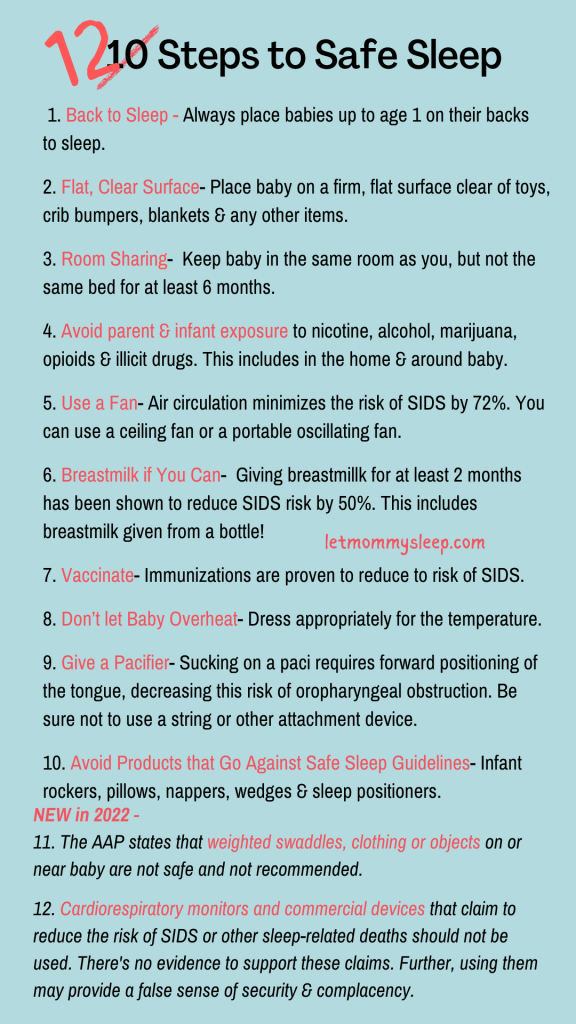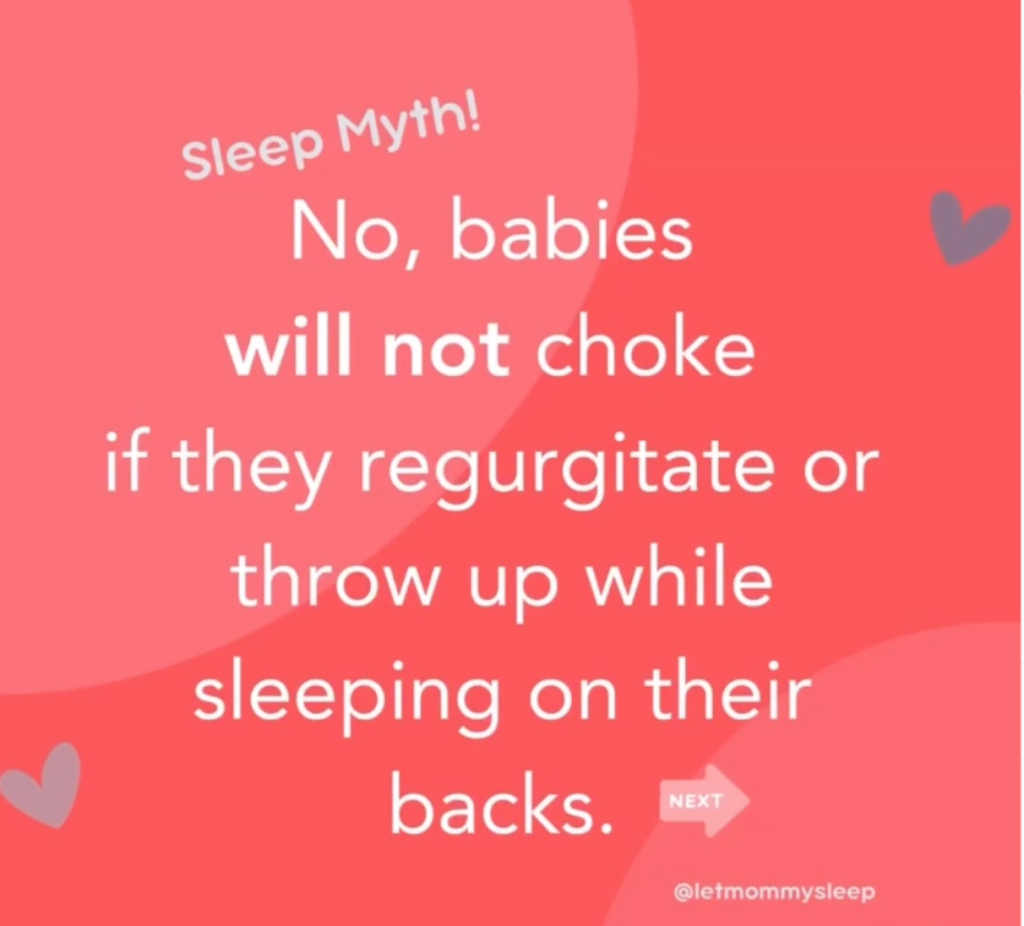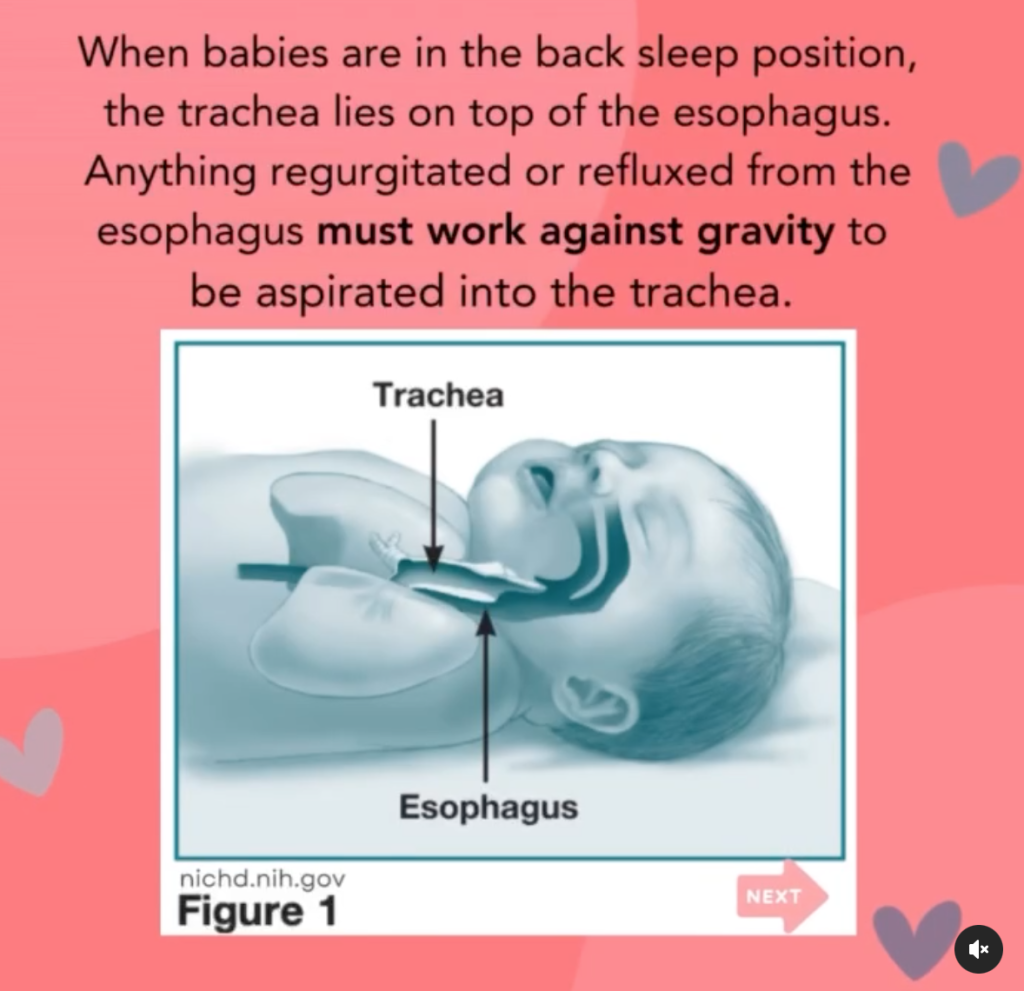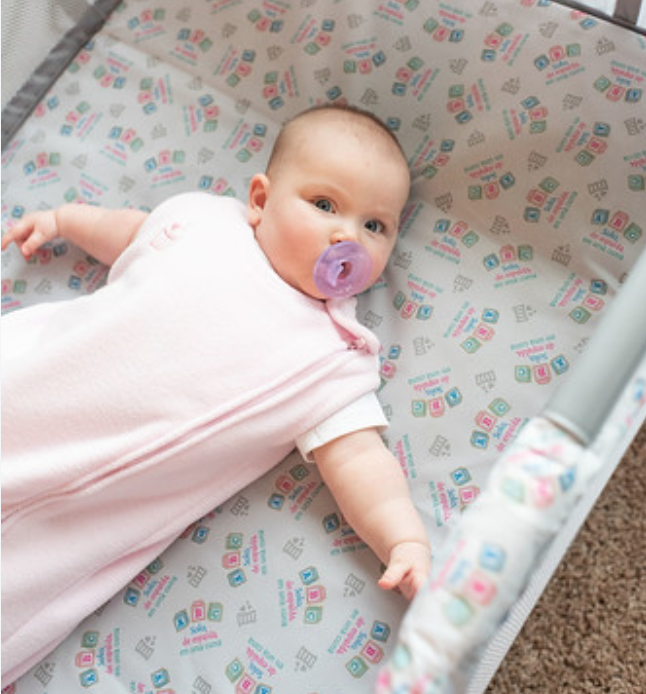10 Steps to Safe Sleep for Baby
The American Academy of Pediatrics (AAP) updated its Safe Sleep Guidelines today. Here are 10 steps to safe sleep for baby with a breakdown of each guideline. The new 2022 issues and recommendations addressed by the AAP are added in pink.

10 Steps to Safe Sleep
- Tummy time is recommended during awake times so that baby can exercise. This also ensures that babies don’t develop flat head syndrome from being placed on their backs too much.
2. Flat, clear surface: Place baby on a firm, flat surface clear of toys, crib bumpers, blankets & other items. This also means no crib wedges, sleep positioners or other items marketed to help infants sleep more soundly. Keep baby’s airways clear without any risk of the head lowering and restricting airflow by placing them in the supine position.
3. Room Sharing: Keep baby in the same room as you, but not the same bed for NEW – at least 6 months. Previous advice was to stay in the same room for at least the first year of baby’s life. We certainly acknowledge that millions of families happily co-sleep with no problem and it’s often a cultural norm. But in terms of minimizing SIDS, the only safe space for baby is alone, in a crib free of sheets and pillows.
4. Avoid Smoking: in the home and around baby. There’s no risk-free amount of smoke for your baby. This includes secondhand smoke. NEW -The AAP has addressed other substances besides smoking stating simply: Avoid parent and infant exposure to nicotine, alcohol, marijuana, opioids, and illicit drugs.
5. Use a fan: Air circulation minimizes the risk of SIDS by 72%. You can use a ceiling fan or a portable oscillating fan. Both will work to keep the air flowing and reduce the risk of re-breathing air that has already been exhaled with carbon dioxide
6. Breastfeeding: If you can, nursing your newborn for at least 2 months has been shown to reduce the risk by 50%. This counts for milk given from a bottle as well as from the breast. The reason breastmilk helps is because it promotes brain growth, builds up the immune system and reduces instances of reflux. Lowered instances of reflux keep airways clear.
7. Vaccinate: Immunizations are proven to reduce to risk of SIDS.
8. Don’t let baby overheat: Dress appropriately for the temperature.
9. Give a pacifier: As the AAP has noted sucking on a pacifier requires forward positioning of the tongue, thus decreasing this risk of oropharyngeal obstruction. Be sure not to use a string or other attachment device when using a paci.
10. Avoid products that go against safe sleep guidelines: While they can still be found at many resellers, inclined sleepers have been banned for sale. The Consumer Product and Safety Commission (CPSC) ban affects rockers, pillows, nappers, wedges and sleep positioners. This ban took effect in 2022. Infants should not be put in these for sleep.
NEW– The AAP addresses weighted sleep sacs and swaddles stating that Weighted swaddles, weighted clothing or weighted objects on or near the baby are not safe and not recommended. As far as swaddling goes, it is still recommended to help newborns stay comfortable but there is no evidence that swaddling is a SIDS deterrent.
NEW – The AAP specifically calls out cardiorespiratory monitors and other commercial devices that claim to reduce the risk of SIDS or other sleep-related deaths. Not only is there no evidence to support these product claims but the use of products claiming to increase sleep safety may provide a false sense of security and complacency.
In other words, monitors and cribs that claim they will buzz or ring if baby’s breathing stops or heart rate lowers should be avoided.



This list was created using the AAP’s latest recommendations. To learn more we recommend visiting the National Institute for Health for an interactive virtual safe sleep environment.

Categories
- Baby Care Classes
- Baby Care How-To's
- Baby Sleep
- Family Activities with Baby
- Feeding
- Franchise & Company Info
- Hiring Help
- Our Favorites
- Postpartum Health
- Safety & First Aide
- Twins & Multiples
- zArchives
